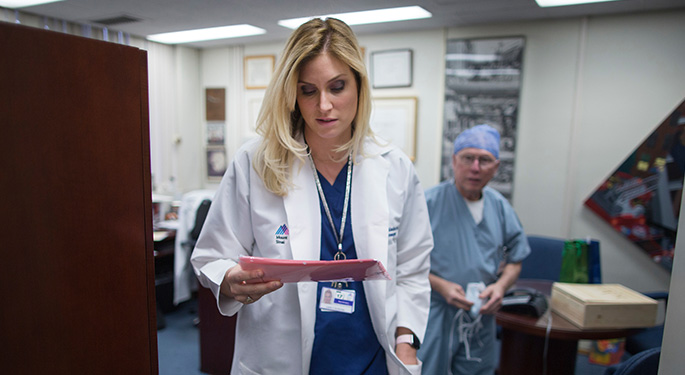
Hemorrhagic Stroke
A stroke that leads to hemorrhage (too much blood in the brain) is called a hemorrhagic stroke. If you have a hemorrhagic stroke caused by a slow accumulation of blood, you may experience symptoms such as headaches, lethargy, and nausea or vomiting.
Your chances of experiencing a hemorrhagic stroke are higher if you are older (over age 65), have a family or personal history of stroke, have uncontrolled diabetes, high cholesterol, or high blood pressure, smoke, are obese, do not exercise, or have a poor diet.
Hemorrhagic strokes that result from a rupturing blood vessel can have serious, immediate, and life-threatening symptoms such as:
- Sudden, severe headache near the back of the head. Many people have described this as the “worst headache of your life.”
- Losing consciousness
- Inability to move or feel
- Confusion and irritability
- Muscle pain in neck and shoulders
- Nausea and vomiting
- Sensitivity to light
- Seizure
- Vision problems
- Drooping eyelids
- One eye pupil larger than the other
Treatment Options
We treat hemorrhagic stroke by locating the source of the bleed and surgically “clipping” it, draining the skull to decrease pressure in the brain, blocking off any sources of bleeding, and/or performing minimally invasive “burr hole” removal of the intracerebral hemorrhage.
After we perform a procedure, we typically give you medications to reduce blood pressure, pain, anxiety, headaches, and/or seizures.
Vagus Nerve Stimulation for Stroke Rehabilitation
After experiencing a stroke, many survivors continue to suffer from persistent impaired upper limb function and weakness. Vagus Nerve Stimulation (VNS) electrical pulses release neuromodulators in the brain that create or strengthen neural connections to enhance the relevance of physical therapy and improve upper limb function. “Pairing VNS with rehabilitation helps stroke survivors regain their independence and improve their quality of life, months or even years after suffering from a stroke,” says cerebrovascular neurosurgeon Christopher Kellner, MD Co-Founder of the Enhanced Stroke Recovery Program. More information about paired vagus nerve stimulation for stroke rehabilitation.